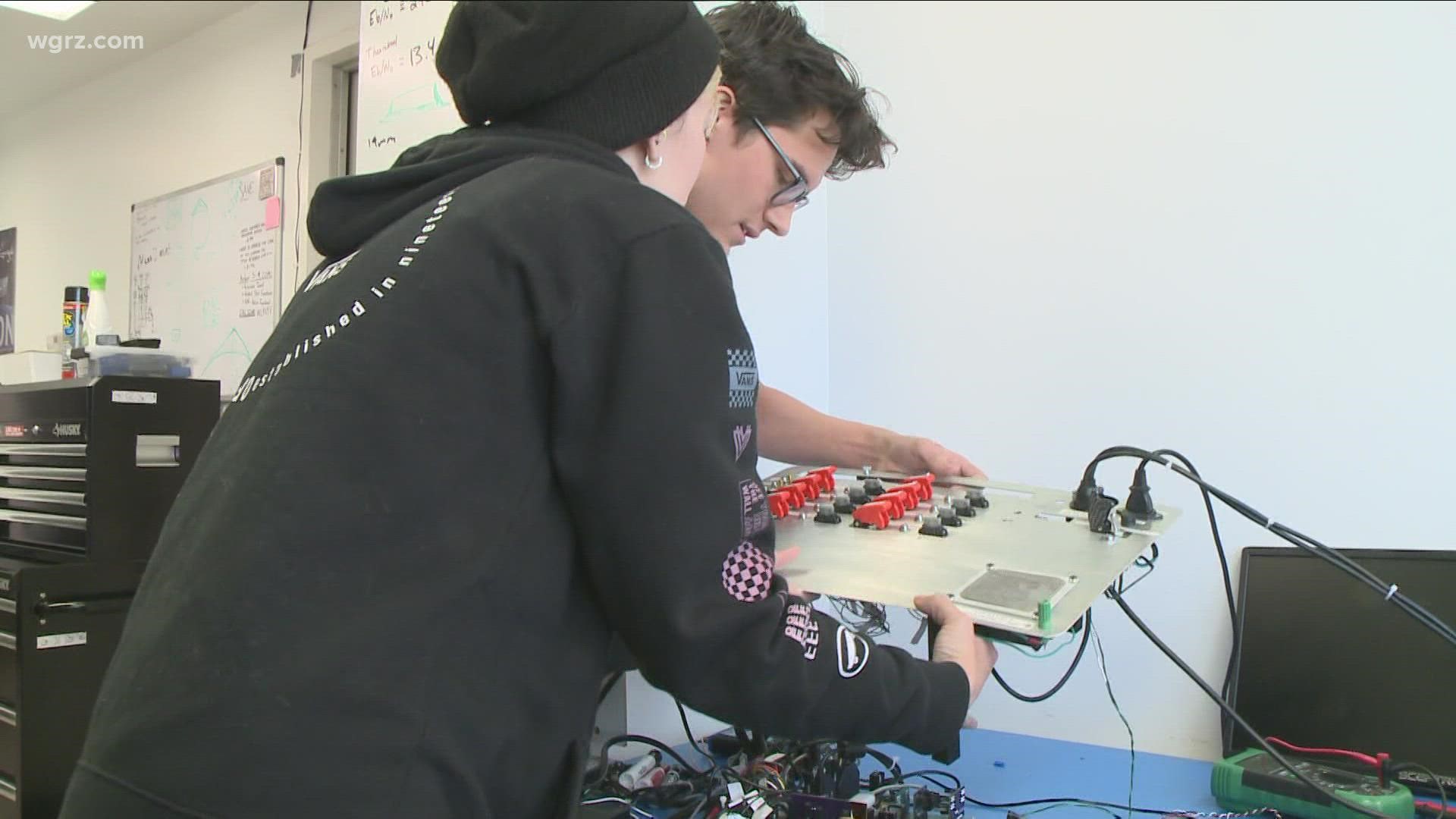AMHERST, N.Y. — As we look to the future here in Western New York, the University at Buffalo's School of Engineering and Applied Sciences could play a prominent role in training and educating the new scientists and engineers in filling positions in regional and national high-tech firms.
They are planning a new building and additional faculty to help in that process.
On the sprawling UB North Campus, there's a space issue for the School of Engineering and Applied Sciences now based at Davis Hall.
"This is an amazing building that we're in now," Dean Kemper Lewis said. "But our enrollments have just exploded over the last few years in some key areas. Computer science and data science and artificial intelligence, robotics and aerospace engineering. We're just busting at the seams now."
The State of New York allocated $68 million, with additional fundraising, for a new $102 million engineering building for the 7,400 and growing undergrad and grad students.
Existing lab space covers everything from robotics and drones, to bio tech work on COVID, and algae in wastewater. And again, computer and data engineering are big.
But Kemper says about this new building: "We're going to have high-tech demos in there. All of our almost 50 student clubs are going to be building, and tinkering, and testing in there with their technologies.
With regional major high-tech corporate players such as Moog, which announced plans to expand its aerospace workforce by 500, and even Calspan and CUBRC doing hypersonic testing for future defense and space travel, along with numerous suppliers and spin-offs, their futures may be bright indeed.
"Our students are getting multiple offers these days. They're coming to me and saying, 'Hey, should I take job A, B, or C? They're incredible offers," Lewis said.
Lewis says the now future looking STEM fields are also getting new interest from all.
"Female students make incredible engineers, and they make incredible computer scientists, and we see that over and over, and so we just want to make sure there's a growing population of female students in our pipeline to make our school better and stronger," Lewis said.
Some of that future bench strength is emerging in the UB Nanosatellite Lab where students learn to assemble earth orbiting vehicles. Among them are aspiring Ph.D. candidates and aerospace engineers with beyond-world dreams.
Graduate student Chet Knoer told 2 On Your Side, "I want to I want to work on interplanetary missions eventually. The focus of my research is on data science."
She added: "I am still very often the only woman in the room, and you have to get comfortable with that. "
Ben Jacobs, who will become a sophomore aerospace engineering major in the fall term, has an interest and space habitats and an idea on how to create them.
"If you want to make big structures in space, you need a lot of materials, and the likeliest place to get them with mining of minerals is from asteroids," Jacobs said.
And with UB's enduring space connections, like Jarvis Hall for UB graduate Greg Jarvis, the late NASA Astronaut killed in the 1986 Challenger disaster, there is this outlook from Lewis.
"It speaks to the past," Lewis said. "It speaks to where we are currentlym and where we want to go, and how we want to continue to impact the space industry."
UB wants to become a top 25 public research university. U.S. News and World Report recently ranked it 33rd. Twenty new faculty members for the engineering-applied sciences school were recently hired with a new focus on artificial intelligence.
Research institutions usually need a lot of grant money from the government and private industry to really grow. In recent months, there have been three significant grants related to to UB's technical expertise.
Of that, $5 million is coming from the Air Force to help study and perhaps figure a way to better track space debris in earth orbit; $7.5 million will be coming in for sophisticated computer semiconductor chip testing; and $10 million was allocated to the university for cyber infrastructure research with its supercomputers.
Some of those are collaborations with other major research institutions and there are probably more to come.

